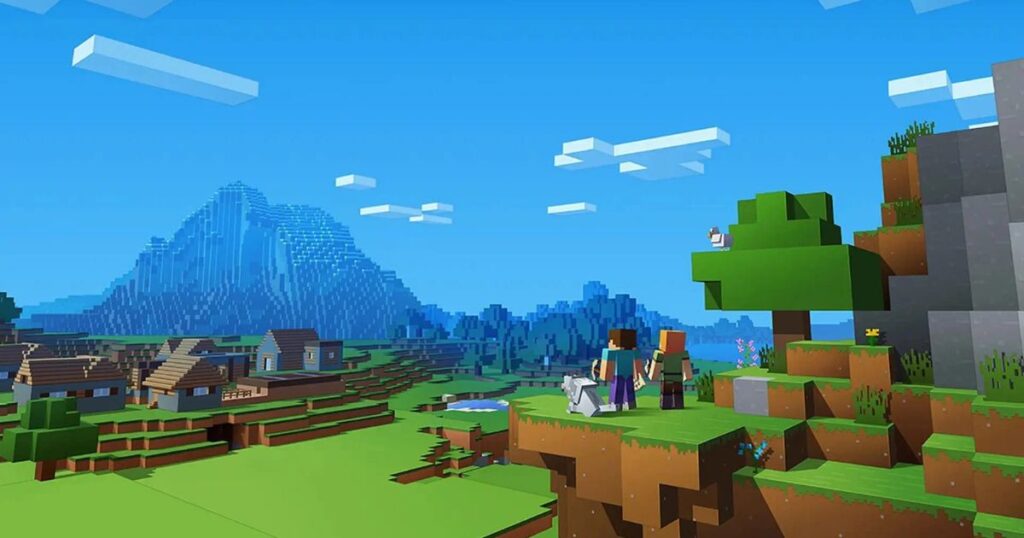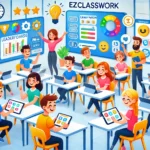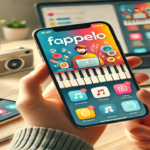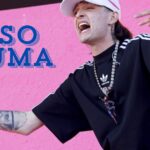Minecraft: Bedrock Edition (2011) features iconic game banners and icons that represent various in-game elements. These visuals are used for customization, helping players personalize their worlds and enhance gameplay. From creative builds to survival challenges, these symbols are a key part of the Minecraft experience, making the game more interactive and visually appealing.
The Bedrock Edition (2011) offers a variety of game icons and banners to make your world truly unique. Looking to customize your Minecraft experience? Whether you’re a seasoned player or just starting, these visuals add a personal touch to your creations. Discover how to enhance your gameplay with these creative tools.
Here are four new H2 headings about “Minecraft: Bedrock Edition (2011) Game Icons Banners”:
Evolution of Minecraft Bedrock Edition Game Icons
The evolution of game icons in Minecraft: Bedrock Edition reflects the game’s growth and the increasing complexity of its features.
Since its release in 2011, Minecraft has seen numerous updates, each bringing new elements to the game.
These updates often come with changes to the game’s icons, making them more detailed and reflective of the diverse gameplay options available.
Early icons were simple, focusing on basic blocks and tools, but over time, they evolved to include more intricate designs that represent newer content such as biomes, creatures, and items.
The evolution of these icons showcases the game’s progression from a straightforward sandbox game to a rich, immersive world with endless possibilities.
Each new icon introduced in the updates adds a layer of excitement for players, symbolizing the new adventures and challenges awaiting them.
Popular Minecraft Banners and Their Meanings
Minecraft banners are a popular customization feature in Bedrock Edition, allowing players to create unique designs that represent their in-game identity, faction, or achievements.
These banners can be crafted using various patterns, dyes, and shapes, making them a versatile tool for personalization.
Some of the most popular banners include those featuring symbols like creepers, skulls, or shields, each carrying a specific meaning within the game’s community.
For instance, a banner with a creeper face might symbolize a player’s affinity for combat or their prowess in surviving encounters with hostile mobs.
Meanwhile, banners with shields often represent protection and defense, making them a favorite among players who focus on building and fortifying bases.
The meaning behind these banners adds depth to the game, allowing players to express themselves creatively while also communicating their in-game roles and personalities to others.
How to Customize Icons and Banners in Bedrock Edition
Customizing icons and banners in Minecraft: Bedrock Edition is a creative process that allows players to personalize their game experience.
To customize a banner, players can use a loom, where they combine a blank banner with dyes and patterns to create a design.
The process is straightforward, but it offers nearly endless possibilities due to the variety of colors and patterns available.
Players can also combine multiple patterns on a single banner to create more complex designs.
When it comes to icons, players can customize their experience by using texture packs, which modify the appearance of game icons to fit a specific theme or style.
This customization not only enhances the visual appeal of the game but also allows players to tailor their world to match their personal preferences.
Whether you are crafting a banner to fly over your castle or modifying icons to fit a medieval theme, customization in Bedrock Edition adds a layer of creativity that makes the game truly yours.
The Impact of Icon and Banner Designs on Minecraft Gameplay
The design of icons and banners in Minecraft: Bedrock Edition plays a significant role in shaping the gameplay experience.
Well-designed icons help players quickly identify items, tools, and resources, making gameplay more intuitive and efficient.
For example, a distinct icon for each type of block or item allows players to navigate their inventory with ease, reducing time spent searching for specific objects.
Banners, on the other hand, impact gameplay by providing a means for players to mark their territory, signify alliances, or communicate with other players in multiplayer settings.
A strategically placed banner can serve as a rallying point for team members or a warning sign to rivals.
The visual appeal of icons and banners also enhances the overall immersion in the game, as players can create environments that feel cohesive and thematic.
In this way, the design of these elements goes beyond aesthetics, directly influencing how players interact with the game world and with each other.
xploring the Visual Evolution of Minecraft: Bedrock Edition’s Game Icons and Banners
Delving into the visual evolution of Minecraft: Bedrock Edition enhances one’s appreciation of the game. This exploration reveals how these icons and banners have transformed over time, each change marking significant milestones in Minecraft’s ongoing development.
Early Years: 2011-2015
During its formative years following launch, Minecraft: Bedrock Edition sported an initially straightforward yet memorable icon—a grass block that quickly became emblematic of the game. Early banners primarily served functional roles, highlighting gameplay elements and updates.
- 2011: The original icon prominently features the grass block.
- 2013: Introduction of characters within banners.
- 2015: Evolution towards more intricate designs integrating gameplay features.
Expansion Phase: 2016-2018
During a period of rapid growth in Minecraft’s popularity, the game’s visual identity underwent significant expansion. Icons and banners evolved to mirror major updates and community-driven content, marking a pivotal era of increased engagement.
- 2016: Introduction of aquatic themes within banners.
- 2017: Icons began incorporating iconic creatures such as the Creeper.
- 2018: Banners commemorated global events and community activities.
Contemporary Developments: 2019-Present
In recent years, Minecraft has undergone a notable visual evolution, emphasizing diversity and expansive possibilities.
- 2019: Icons embraced Nether update themes.
- 2020: Banners spotlighted user-generated content and achievements.
- 2021: Designs of icons and banners reflected real-world themes and inclusivity.
Expansion Era: 2016-2018
2016: The Beginning of Cross-Platform Unification
In 2016, Minecraft took significant strides towards unifying its various editions under the Bedrock Engine, aiming for a seamless cross-platform experience. The game icon adapted with more detailed textures and shadows, creating a three-dimensional effect suitable for multiple devices.
Banners during this period emphasized Minecraft’s new cross-platform capabilities. They often depicted players interacting across different devices within the same world, reinforcing the game’s newfound unified nature.
2017: The Better Together Update
2017 marked a milestone for Minecraft with the “Better Together” update, allowing cross-play between Xbox, Windows 10, mobile, and VR platforms. The game icon received a sleek makeover with a modern design, brighter colors, and a polished look.
Banners prominently showcased the diverse platforms players could use to join the Minecraft universe. Characters from different devices interacting in shared worlds emphasized unity and inclusivity. The visual style also improved, with dynamic compositions and vibrant colors capturing the game’s creative essence.
2018: The Aquatic Update
In 2018, Minecraft introduced the highly-anticipated “Aquatic Update,” bringing underwater biomes, new mobs, and improved water physics. While the game icon remained consistent with 2017’s design, it received subtle tweaks to stay fresh.
Banners heavily focused on the new aquatic content, showcasing underwater exploration, vibrant coral reefs, and encounters with sea creatures. The visual storytelling became more intricate, with detailed artwork and immersive scenes highlighting the update’s depth and beauty.
Current Trends: 2019-Present
2019: The Village & Pillage Update
The “Village & Pillage” update in 2019 introduced new villagers, structures, and the hostile Pillagers to Minecraft. The game icon maintained its polished and vibrant look, ensuring brand consistency while subtly incorporating elements from the update.
Banners prominently featured scenes of village life and the Pillager threat. The dynamic and colorful art style highlighted the game’s rich, interactive environments and expanded gameplay dynamics.
2020: The Nether Update
2020’s “Nether Update” transformed one of Minecraft’s core dimensions, adding new biomes, mobs, and blocks to the foreboding Nether.
While the game icon remained consistent, promotional banners took on a darker, more intense theme to reflect the Nether’s atmosphere.
These banners showcased the new Crimson and Warped Forests, along with menacing mobs like Piglins and Hoglins.
Rich details and contrasting fiery reds and eerie blues captured the Nether’s dangerous beauty.
This period also saw the introduction of animated banners, adding excitement and visual interest.
2021: The Caves & Cliffs Update
The highly-anticipated “Caves & Cliffs” update, released in two parts throughout 2021, revolutionized Minecraft’s underground and mountainous terrain. The game icon subtly reflected the fresh, adventurous spirit of these new landscapes.
Banners focused on the majestic new environments, showcasing towering mountains and sprawling cave systems.
Players were depicted exploring lush caves, interacting with new mobs like the Axolotl and the Warden, and mining precious resources like copper.
The visual style was expansive and immersive, sparking curiosity and a sense of adventure.
2022: The Wild Update
In 2022, the “Wild Update” brought enhancements to the Overworld, adding new biomes like the Deep Dark and the Mangrove Swamp, along with fresh mobs and blocks.
While the game icon stayed true to its established brand identity, it continued incorporating subtle changes to remain current and appealing.
What is Minecraft: Bedrock Edition?
Minecraft: Bedrock Edition refers to the multi-platform version of Minecraft, allowing players to enjoy the game across different devices like Windows, Xbox, PlayStation, Nintendo Switch, and mobile devices. Unlike the Java Edition, Bedrock Edition is designed for cross-play, making it accessible to a broader audience.
History and Evolution of the Game
Minecraft started as a simple sandbox game and evolved into a cultural phenomenon. The Bedrock Edition was released to unify the gaming experience across platforms, providing consistent updates and features. Over the years, it has seen numerous updates that introduced new mechanics, items, and customization options, including game icons and banners.
Icon and Banner Customization in Bedrock Edition
Minecraft: Bedrock Edition offers a range of tools for players looking to customize their game, including the ability to modify icons and banners. Whether through resource packs, in-game tools, or external software, players have numerous options for personalizing their Minecraft experience.
Resource Packs and Add-Ons
Resource packs are the primary method for customizing game icons in Minecraft: Bedrock Edition. These packs allow players to replace the default textures and icons with custom designs, providing a straightforward way to personalize the game’s appearance. Creating a resource pack involves editing the game’s texture files, which are stored in a specific format within the game’s directory. Players can modify these files using graphic design software and then package them into a resource pack that can be loaded into the game.
Add-ons, a feature unique to the Bedrock Edition, offer another layer of customization by allowing players to modify the game’s behavior and appearance. While resource packs primarily focus on textures and sounds, add-ons can change the way the game functions, including altering how specific icons appear or behave. This opens up even more possibilities for customization, particularly for players interested in creating unique gameplay experiences.
In-Game Tools and External Software
For those interested in creating custom banners, Minecraft: Bedrock Edition provides in-game tools that make the process easy and intuitive. Players can use the loom, a block designed explicitly for crafting and customizing banners. The loom interface allows players to select a base color and apply patterns using dyes, with a preview showing how the banner will look at each step.
Conclusion
Since 2011, Minecraft: Bedrock Edition has been marked by creativity, community involvement, and visual narratives. The game’s symbols and flags highlight its lasting popularity and ability to change.
As Minecraft expands, these visual features will keep inspiring players globally, signifying new periods in its celebrated history.







